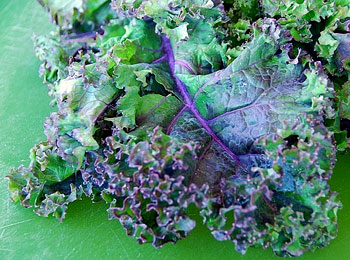 There are some products, where the name really does matter. For me, Ile de France cheese is one of them.
There are some products, where the name really does matter. For me, Ile de France cheese is one of them.
I have been buying their products for years now and have never been disappointed, which is why I enthusiastically accepted their offer to review their Camembert cheese. Ile de France's Camembert is a soft-ripened cheese with a luxuriously creamy texture and mild, nutty flavor. It's ideal for cheese platters when paired with olives, fruit, crackers, and toasts.
Today's recipe for Camembert and Kumquat Chutney Toasts contrasts the pleasantly mild cheese with a tart, tangy fruit and spice chutney. I have served this appetizer for dinner parties twice now to rave reviews. To save time, both the chutney and the toasts can be made ahead of time. Then just before your guests arrive, assemble the toasts with the cheese, and you're good to go. Serve them with some chilled Riesling, and trust me, they won't be disappointed.

 I feel compelled to get my final tastes of Winter under my belt. The cold days are perfect matches for braising meats, chowders and simmering soups.
I feel compelled to get my final tastes of Winter under my belt. The cold days are perfect matches for braising meats, chowders and simmering soups. It happens every week. As I'm selecting my Swiss chard, kale, or collards, someone inevitably sidles up to me and asks, "What do you do with that?" Then after I share a recipe idea, she usually follows up with, "To me, they're all the same."
It happens every week. As I'm selecting my Swiss chard, kale, or collards, someone inevitably sidles up to me and asks, "What do you do with that?" Then after I share a recipe idea, she usually follows up with, "To me, they're all the same." About 6 weeks ago my friend Mary, emailed me to say that her blood oranges from her tree(yeah-she has a tree) were almost ripe and wanted to drop some off for me to enjoy. I was elated and anxiously awaited the bag.
About 6 weeks ago my friend Mary, emailed me to say that her blood oranges from her tree(yeah-she has a tree) were almost ripe and wanted to drop some off for me to enjoy. I was elated and anxiously awaited the bag. You usually see this around Thanksgiving – it makes a great first course – but it’s also perfect on a cold winter day. I think the most impressed I’ve ever been with this soup was the first time I had it at Spago’s in Beverly Hills. Wolfgang Puck serves his signature soup with a cranberry relish and cardamom infused cream.
You usually see this around Thanksgiving – it makes a great first course – but it’s also perfect on a cold winter day. I think the most impressed I’ve ever been with this soup was the first time I had it at Spago’s in Beverly Hills. Wolfgang Puck serves his signature soup with a cranberry relish and cardamom infused cream.
